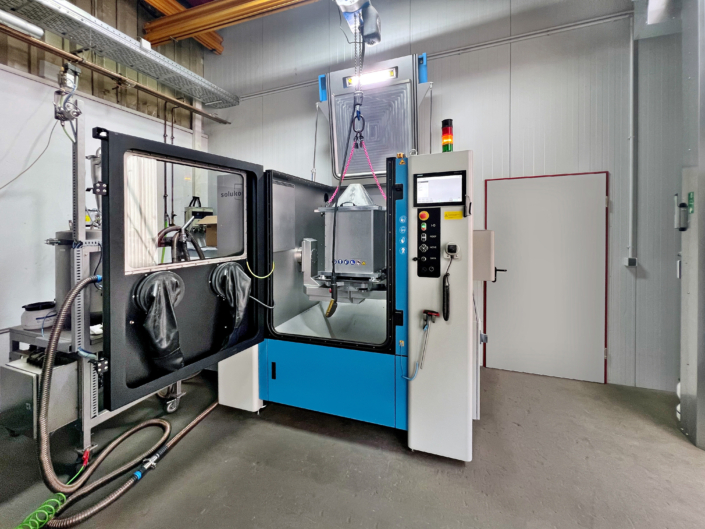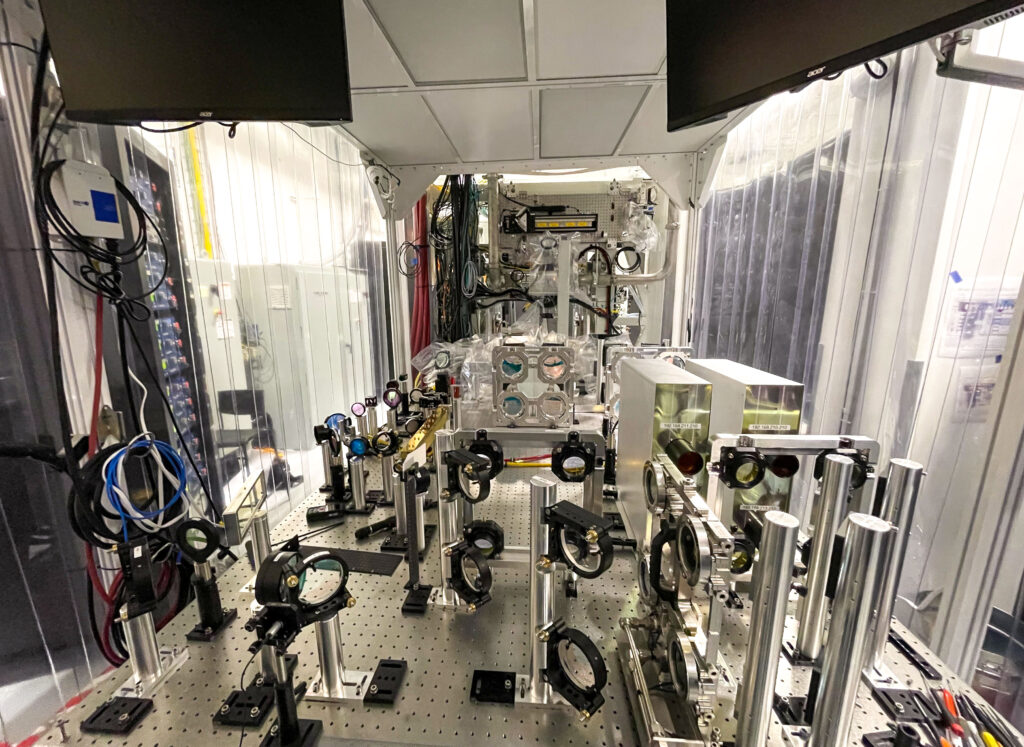Metal 3D printing has attracted significant investment in recent years, with machine sales increasing by over tenfold in the past decade. The industry has witnessed the rise of large multi-laser systems in what 3DPrint.com refers to as the “Laser Wars.” Disruptive companies like Seurat, Velo3D, and VulcanForms have introduced innovative solutions, reshaping the market landscape. Meanwhile, affordable options like MELTIO, Xact Metal, and One Click Metal are democratizing metal 3D printing.
Chinese vendors are also making inroads into established markets. The growth of new sectors, particularly in space and defense, has been a major driver. There’s potential for a division between a China-focused market and a more defense-oriented US and European one. Additionally, low-cost systems could potentially expand the market by a factor of twenty, making metal 3D printing more accessible. As we look ahead to 2024, we’ve gathered insights from experts to provide their perspectives on the future of the metal 3D printing industry in the coming months.
“I’m truly optimistic that 2024 will be something of a breakthrough year for AM. The focus will continue to be on part manufacturing and the resulting economics. The more this trend continues, the sooner AM becomes a manufacturing technology. But to be clear, it will come in waves for metals, with the different processes maturing at different rates. PBF is getting close with the increases in productivity and more engineers appreciating the impact of designing with AM in mind. Innovation will continue to grow from application development, part design, and manufacturers. Printer manufacturers will continue to grow as partners to the manufacturers,” said John Barnes, founder and president of The Barnes Global Advisors.
Brent Stucker, Chief Technology Strategist at Wohlers Associates, powered by ASTM International, is also optimistic.
“I think industry growth will be greater in 2024 than in 2023,” Stucker said. “I think we had a boom and bust cycle that occurred because of COVID, with 2023 being the bust year. I see us moving back to a higher rate of growth and profitability in 2024 as the effects of market hype and COVID-induced market instabilities work their way out of the industry. I think the Additive Manufacturing industry must focus more on what is ‘real today’ than what is ‘possible in the future.’ Many companies and consultants have overhyped some of 3D Printing’s abilities, and as that overhyped message is debunked, it is hurting the legitimate companies who are capable of delivering what they promise. We need honesty, transparency, and accountability in the industry to restore our reputation in the broader business and manufacturing communities. I expect the shift from prototyping to mass manufacturing of parts to accelerate.”
AP Works CEO Jonathan Meyer provided his own thoughts on the situation:
“I think 2024 will see some less well-known AM companies thrive as adoption of the technology for real applications grows. At the same time, there will be a lot of failures or significant reductions in ambition of well-known players who have based everything so far on hype and have oversized their businesses compared to the real market need.”
I love the idea of some kind of karmic rebalancing of our collective fortunes and do agree that we could see some real dark horses surprise us with volumes that are unheard of, especially in industrial metal end-part production.
Jonathan Aaron Cohen, CEO of 3D printing service MIMO Technik, noted:
“The industrialization of AM will be needed to drive new growth in Metal AM. As the machines grow in complexity and cost, there will be more specialization among service providers. A bifurcation in costing build rates and value will become more apparent. On the one hand, you have manufacturers championing driving cost-per-kg down and offering ‘Casting replacements’, at the sacrifice of quality and resolution; on the other, you will have specialists striving for complex functional integration with details spread over larger volumes, i.e., aerospace, payload, and propulsion. Machine OEMs for 2024 will be divided along those lines, I predict. Machines will start to differentiate across their intended strengths.”
It is about time that we see real specialization and differentiation in machines. We’re seeing custom machines and very specialized machines in polymer but not a lot of differentiation in metal 3D printing between industries and users. I would applaud such a move and really would consider specialization and meeting the needs of particular customers a significant step forward.
Long term applications engineering leader Jono Munday thinks that,
“On the use case side, there is interest from industrial customers in how additive can help to make improvements in their applications, for instance in the cooling of mold tools or improved efficiencies with AM heat exchangers. The drive comes from the need to improve products to meet targets such as net zero and is a process of evolution rather than a complete revolution. The key here is working in partnership to prove out the benefits rather than being seen as a threat or irrelevant to their future. In some cases, AM has been tried in the past but because of the lack of maturity at the time, it has been discarded as too difficult, not reliable, or too expensive. We need to show that things can be done but not underplay the work that goes into getting to the end goal, countering the ‘just press print’ messaging with the truth that additive is just another manufacturing process that needs to be developed and tuned. On the machine front, it will be interesting to see how the European market is affected by the expansion of machine suppliers from China and their increased local presence. Will this lead to further innovation or lower prices for equipment?”
While I’m somewhat cautious about the growth outlook, I’m enthusiastic about the emphasis on collaboration and the acknowledgment that expansion may occur in phases at varying rates. Furthermore, I concur with the notion that we have a renewed opportunity to reaffirm that AM is a tangible reality. The industry may not have endless opportunities, but there is a genuine chance to transform skepticism into actual production once more.
 The Solukon SFM-AT1000-S depowdering system.
The Solukon SFM-AT1000-S depowdering system.Andreas Hartmann, CEO of depowdering leader Solukon, is more careful.
“From my point of view, the market for new printers is somewhat saturated. So, I expect no further launches of printers with disruptive features for 2024,” Hartmann said. “But what I do expect is further differentiation with regards to materials or printing parameters. Taking Fraunhofer’s multi-material printing approach, there is still lots of space for innovation, but not in the mere construction of printers. Rather, it’s in considering the application area of the part to be produced. Copper has been a contender in recent years and will also be for 2024 since it’s a widely usable material with good thermal conductivity. Needless to say, printed parts will get even bigger. That has been a trend for years, and I still see little in the way of a limit here.”
 Seurat’s many-point LPBF 3D printer.
Seurat’s many-point LPBF 3D printer.Hartmann anticipates additional progress in automation, post-processing automation, and overall efficiency within the industry. He recognizes that European companies may face challenges due to the investment climate and energy costs but emphasizes the importance of continued investment in these areas.
Seurat CEO James DeMuth thinks that focus in the answer to our current trying times. He believes that,
“In 2024, the most successful companies will be those that define and capitalize on their strengths and core competencies. Companies need to articulate their strengths clearly, or customers will do it for them, potentially leaving the company behind in favor of the preferred solution. Expect to see market leaders emerging from companies that more clearly align with market segments such as rapid prototyping, low-fidelity, large form factor, high fidelity, low volume precision, and high fidelity serial production. Companies that successfully articulate their value proposition will forge distinctive market identities. As always, customers define success.”
I appreciate DeMuth’s emphasis on the importance of correct segmentation in the industry, a practice often overlooked as people tend to perceive users as simply pushing the same buttons, but on different machines. However, varying quality levels, focuses, and advancements will lead to increased segmentation. It’s intriguing to consider that unexpected victors may emerge by offering precisely tailored value propositions to eager customers with pent-up demand.
One Click Metal CEO Gerrit Brüggemann added:
“Laser powder bed fusion continues to lead in metal 3D printing, attracting new manufacturers into the market. Many newcomers offer cost-effective systems, allowing numerous companies to enter metal 3D printing. Successful manufacturers must offer simple, affordable systems without compromising quality, transitioning from ‘entry-level’ to ‘professional’ labeling to enhance the overall adoption of metal 3D printing.”
Looking beyond laser powder bed fusion (LPBF), we see exciting developments in binder jet technology, with firms continuously improving machines and finding applications. While binder jet holds much promise, it is slowly becoming more industrialized. Of other technologies notably, directed energy deposition (DED) and related technologies have experienced explosive growth, with FormAlloy CEO Melanie Lang foreseeing DED taking a prominent role in the industry.
“Directed energy deposition is essential to manufacturing’s evolution, offering replacements and repairs for castings and forgings while reducing lead times and material waste. Its role in shaping the future of engineering and production through material versatility and custom alloys to improve performance will begin to revolutionize industries and redefine what’s possible. Data-driven methodologies for qualification and certification will not only reduce cost but also ensure standards of quality and reliability in the manufacturing process. A rapid increase in industrial adoption of DED processes is on the horizon due to the scalability, value, and versatility of the technology.”
DED has often been overlooked in favor of other 3D printing technologies. However, it seems that the Cinderella that never gets an invite to the ball may finally have its moment in the spotlight. I’m particularly excited about DED’s potential in applications like repair and gradient parts, not to mention its cost-effectiveness. Its versatility in military applications is vast, and I concur that we can expect to witness further industrialization of DED beyond its current use in turbine blisks in the year 2024.
Subscribe to Our Email Newsletter
Stay up-to-date on all the latest news from the 3D printing industry and receive information and offers from third party vendors.
You May Also Like
Further Understanding of 3D Printing Design at ADDITIV Design World
ADDITIV is back once again! This time, the virtual platform for additive manufacturing will be holding the first-ever edition of ADDITIV Design World on May 23rd from 9:00 AM –...
3D Printer Maker EVO-tech Reborn as NEVO3D — Once More With Feeling
EVO-tech was a 3D printing service and original equipment manufacturer established in 2013 and based in Schörfling am Attersee, Austria. The company produced high-quality material extrusion systems featuring linear bearings,...
3D Systems Brings 3D Printed PEEK Cranial Implant to the U.S. with FDA Clearance
For more than 10 years, 3D Systems (NYSE:DDD) has worked hand-in-hand with surgeons to plan over 150,000 patient-specific cases, and develop more than two million instruments and implants from its...
CDFAM Returns to Berlin for Second Annual Symposium
The second CDFAM Computational Design Symposium is scheduled for May 7-8, 2024, in Berlin, and will convene leading experts in computational design across all scales. Building upon the first event...































